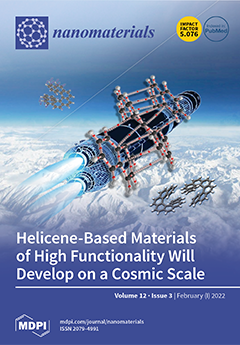Atomic force microscopy (AFM) was used to investigate the morphology and rigidity of the opportunistic pathogenic yeast,
Candida albicans ATCC 10231, during its attachment to surfaces of three levels of nanoscale surface roughness. Non-polished titanium (npTi), polished titanium (pTi), and glass with respective
[...] Read more.
Atomic force microscopy (AFM) was used to investigate the morphology and rigidity of the opportunistic pathogenic yeast,
Candida albicans ATCC 10231, during its attachment to surfaces of three levels of nanoscale surface roughness. Non-polished titanium (npTi), polished titanium (pTi), and glass with respective average surface roughness (
Sa) values of 389 nm, 14 nm, and 2 nm, kurtosis (
Skur) values of 4, 16, and 4, and skewness (
Sskw) values of 1, 4, and 1 were used as representative examples of each type of nanoarchitecture. Thus, npTi and glass surfaces exhibited similar
Sskw and
Skur values but highly disparate
Sa.
C. albicans cells that had attached to the pTi surfaces exhibited a twofold increase in rigidity of 364 kPa compared to those yeast cells attached to the surfaces of npTi (164 kPa) and glass (185 kPa). The increased rigidity of the
C. albicans cells on pTi was accompanied by a distinct round morphology, condensed F-actin distribution, lack of cortical actin patches, and the negligible production of cell-associated polymeric substances; however, an elevated production of loose extracellular polymeric substances (EPS) was observed. The differences in the physical response of
C. albicans cells attached to the three surfaces suggested that the surface nanoarchitecture (characterized by skewness and kurtosis), rather than average surface roughness, could directly influence the rigidity of the
C. albicans cells. This work contributes to the next-generation design of antifungal surfaces by exploiting
surface architecture to control the extent of biofilm formation undertaken by yeast pathogens and highlights the importance of performing a detailed surface roughness characterization in order to identify and discriminate between the surface characteristics that may influence the extent of cell attachment and the subsequent behavior of the attached cells.
Full article






